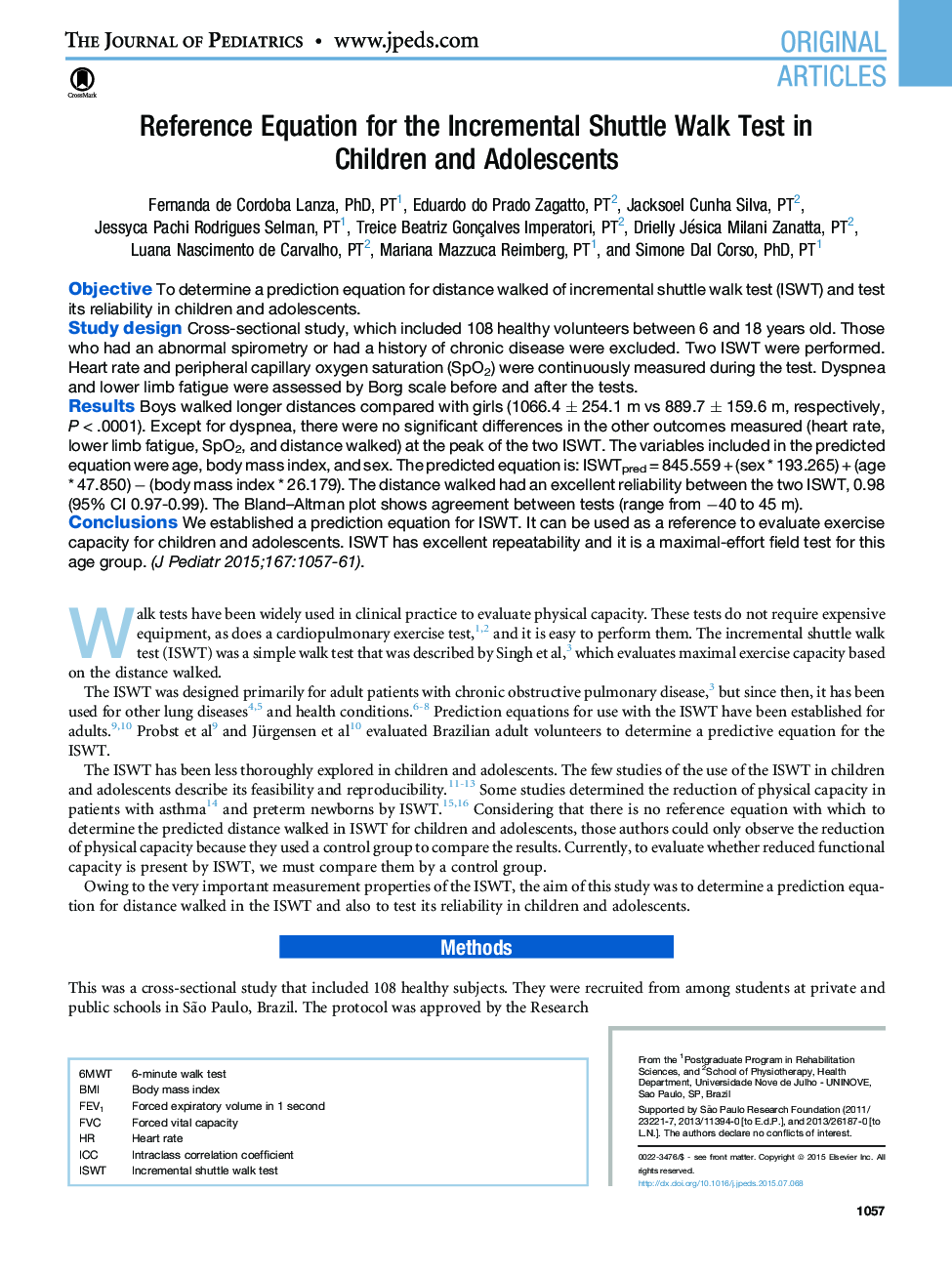| Article ID | Journal | Published Year | Pages | File Type |
|---|---|---|---|---|
| 4164723 | The Journal of Pediatrics | 2015 | 5 Pages |
ObjectiveTo determine a prediction equation for distance walked of incremental shuttle walk test (ISWT) and test its reliability in children and adolescents.Study designCross-sectional study, which included 108 healthy volunteers between 6 and 18 years old. Those who had an abnormal spirometry or had a history of chronic disease were excluded. Two ISWT were performed. Heart rate and peripheral capillary oxygen saturation (SpO2) were continuously measured during the test. Dyspnea and lower limb fatigue were assessed by Borg scale before and after the tests.ResultsBoys walked longer distances compared with girls (1066.4 ± 254.1 m vs 889.7 ± 159.6 m, respectively, P < .0001). Except for dyspnea, there were no significant differences in the other outcomes measured (heart rate, lower limb fatigue, SpO2, and distance walked) at the peak of the two ISWT. The variables included in the predicted equation were age, body mass index, and sex. The predicted equation is: ISWTpred = 845.559 + (sex * 193.265) + (age * 47.850) − (body mass index * 26.179). The distance walked had an excellent reliability between the two ISWT, 0.98 (95% CI 0.97-0.99). The Bland–Altman plot shows agreement between tests (range from −40 to 45 m).ConclusionsWe established a prediction equation for ISWT. It can be used as a reference to evaluate exercise capacity for children and adolescents. ISWT has excellent repeatability and it is a maximal-effort field test for this age group.
